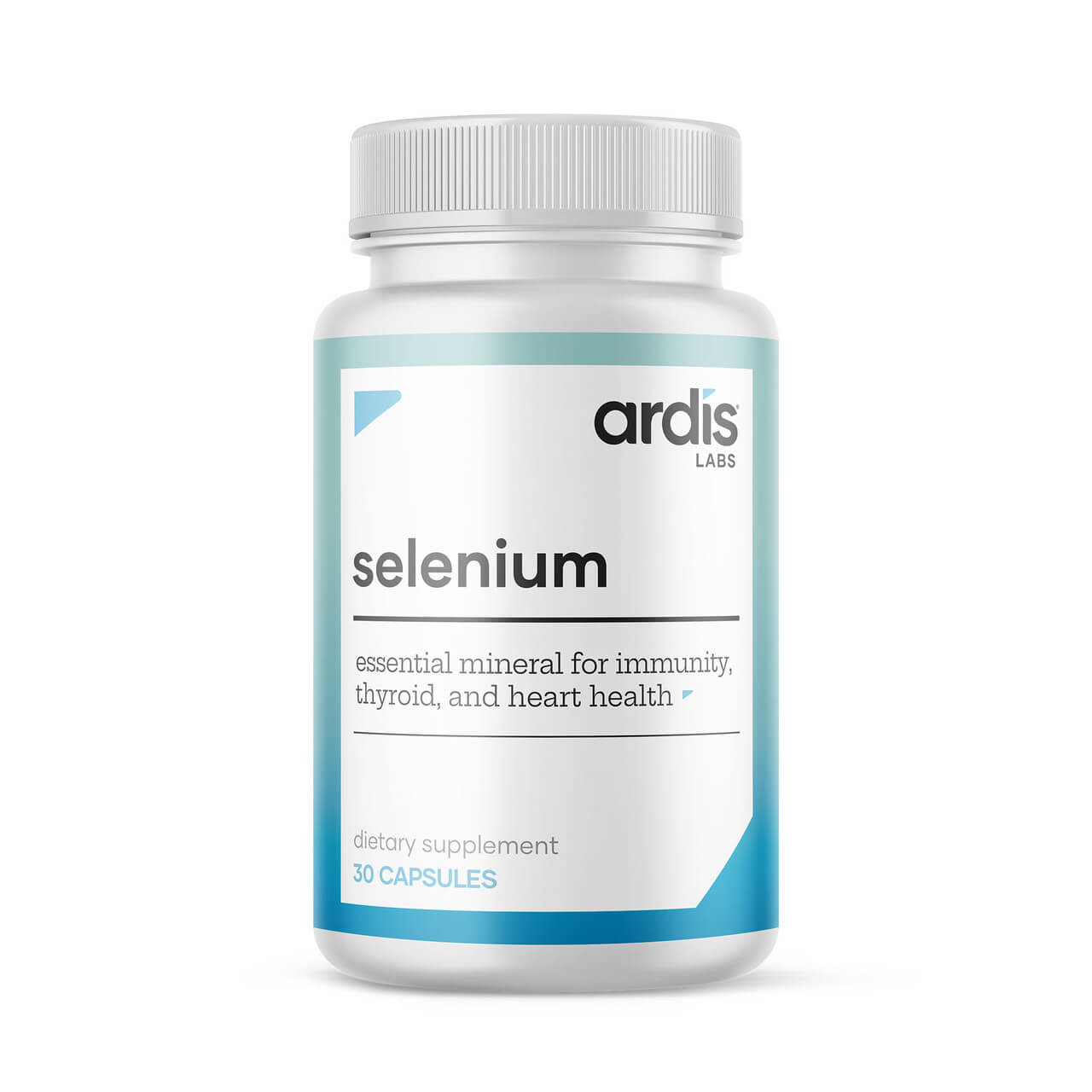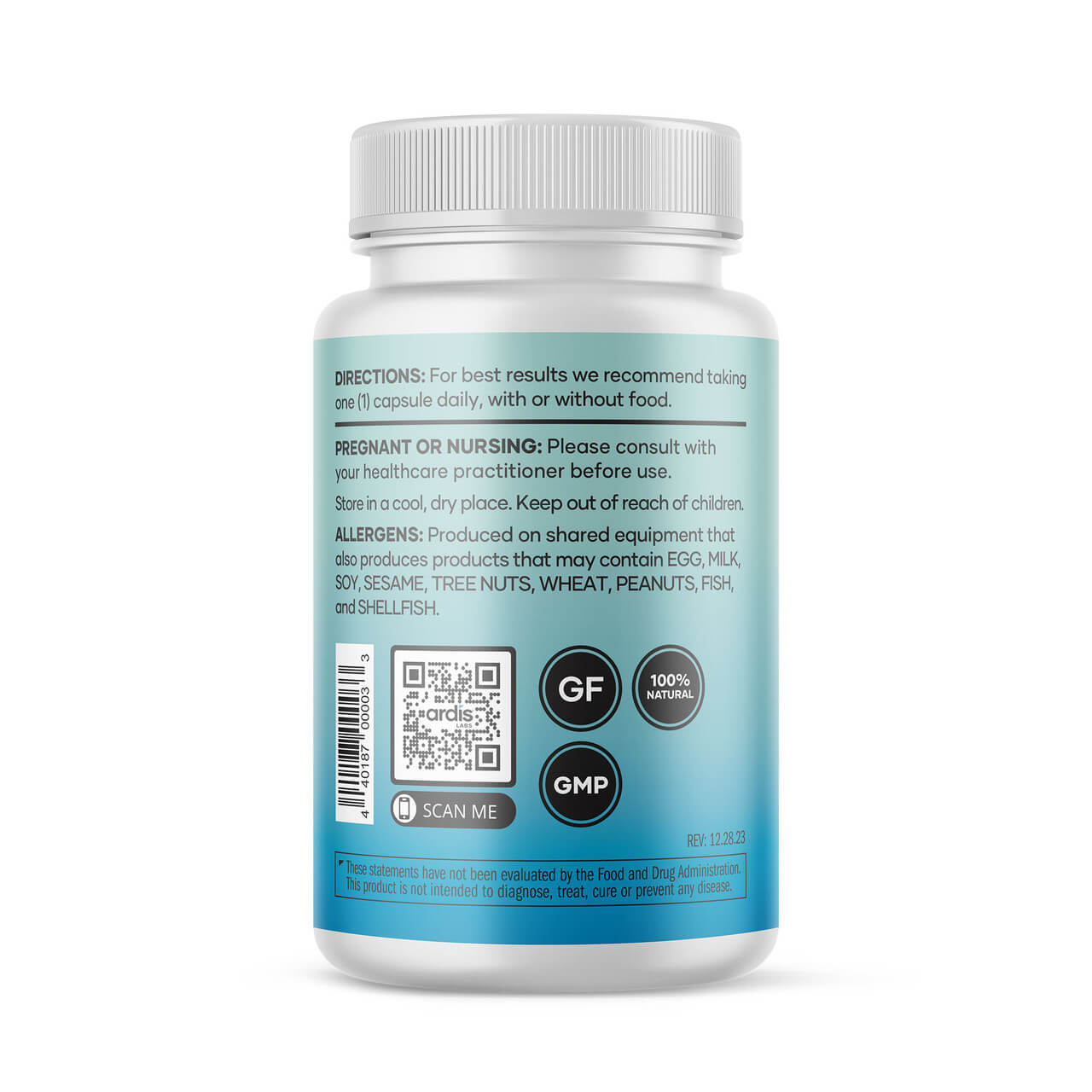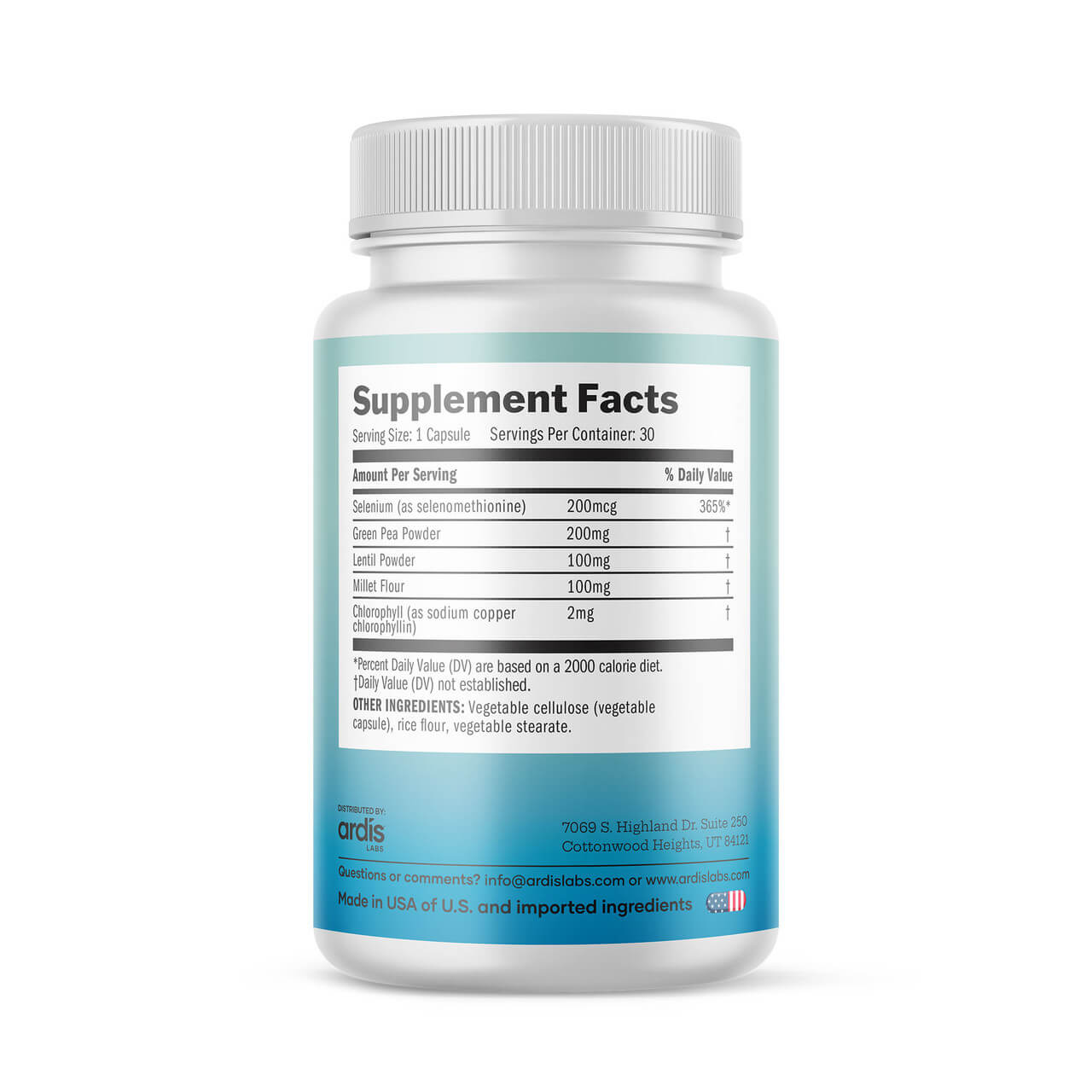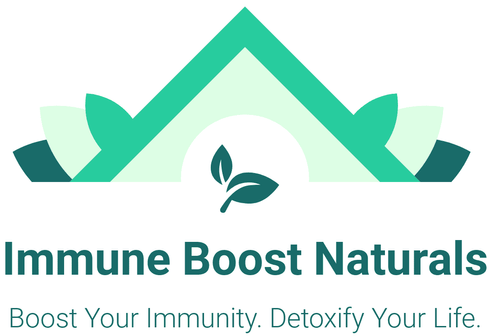Nature Wins
Nature Wins Selenium - 30 Capsules
Nature Wins Selenium - 30 Capsules
Couldn't load pickup availability
🌿 Important Update on Nature Wins Products
You can purchase all Nature Wins products directly from the official website:
👉 thedrardisshow.com/?aff=63 (affiliate link)
🎉 Save 10% on most Nature Wins products with coupon code: IBN
Important Brand Update: Ardis Labs is Now Nature Wins!
We’re excited to share that Ardis Labs is transitioning to Nature Wins, a brand dedicated to promoting health and well-being through nature's best remedies. This change aligns with Dr. Ardis’s vision to provide natural, drug-free solutions for a symptom-free life.
Why the Change?
After years as Ardis Labs, Dr. Ardis is rebranding to better reflect his mission to harness the power of nature for restoring health. The new name, Nature Wins, speaks to his belief that everything needed to support a healthy immune system can be found in nature.
What Stays the Same?
Rest assured, the quality and effectiveness of the products remain unchanged. Only the branding will feature the new name, Nature Wins, starting with the Taurine supplement.
Dr. Ardis’s Commitment to You
Through Nature Wins and The Dr. Ardis Show, Dr. Ardis is dedicated to reducing suffering and restoring health naturally, without reliance on drugs or vaccines. He’s excited to bring you even more natural health solutions under the new Nature Wins brand.
Thank you for being a part of this journey toward a healthier, symptom-free life through the healing powers of nature!
SELENIUM DESCRIPTION
Our Selenium Supplement is a meticulously crafted formula designed to provide essential support for your immune system, thyroid function, and cardiovascular health. Each capsule contains a potent dose of selenium in the highly bioavailable form of selenomethionine, along with a blend of nutrient-rich plant powders and chlorophyll.
- ArdisLabs offers an extensive line of vitamin and mineral supplements that are formulated to the highest standards.
- Our supplements are manufactured in the USA.
- ArdisLabs leads the way in innovative and revolutionary products that support your immune system against stress, anxiety, and viruses that can constantly attack your immune system.
- Safety sealed, 30 Count.
IMPORTANT INFORMATION
DIRECTIONS
For best results we recommend taking one (1) capsules daily.
Pregnant or Nursing: Please consult your healthcare practitioner before use.
INGREDIENTS
Selenium (as selenomethionine) 200mcg, Green Pea Powder 200mg, Lentil Powder 100mg, Millet Flour 100mg, Chlorophyll (as sodium copper chlorophyllin) 2mg
Other Ingredients: Vegetable cellulose (vegetable capsule), rice flour, vegetable stearate.
That's it! We don't hide ingredients. Everything that goes into every ArdisLabs supplement is listed on the label.
SELENIUM KEY BENEFITS
Essential mineral for immunity, thyroid, and heart health
- Powerful Antioxidant - Defends against free radicals that can damage cells and protect normal cell function. The antioxidant properties also help to maintain a healthy heart, cardiovascular health and free radical protection for maximum thyroid support.
- Cardiovascular Health - Normal cardiovascular health requires adequate selenium. Selenium can benefit heart health by soothing oxidative stress and supporting normal circulation. Selenium plays a vital role in supporting a normal metabolism.
- Thyroid & Immune System Support - Selenium is important for normal thyroid function by helping balance hormones and protecting against damaging free radicals. The essential antioxidant is vital in supporting a strong immune system.
Shipping Information
Domestic Orders: ArdisLabs offers Free Shipping for all orders over $150 within the United States (domestic). ImmuneBoostNaturals.com only ships ArdisLabs products to the 50 United States of America. For international orders, please follow the steps below.
For International Orders, please click this link to visit TheDrArdisShow.com and use code IBN for a 10% discount.
RESEARCH STUDIES
Ingredient #1: Selenium
Acts as a powerful antioxidant
- Selenium supplementation improves antioxidant capacity in vitro and in vivo in patients with coronary artery disease The SElenium Therapy in Coronary Artery disease Patients (SETCAP) Study
- https://www.sciencedirect.com/science/article/abs/pii/S0002870308007898?via%3Dihub
- Human coronary artery endothelial cells were incubated with 5.78 to 578 nmol/L sodium selenite
- Assigned to receive 200 or 500 μg sodium selenite daily or matching placebo during a 12-week period.
- Sodium selenite and Se-methyl-selenocysteine hydrochloride increased GPx-1 protein and activity in a dose-dependent manner (P < .0001). The intention-to-treat groups comprised 433 CAD patients. Glutathione peroxidase 1 activity increased from 37.0 U/gHb (31.3-41.7) to 41.1 U/gHb (35.2-48.4) (P < .0001) in the 200 μg and from 38.1 U/gHb (33.2-43.8) to 42.6 U/gHb (35.0-49.1) (P < .0001) in the 500 μg sodium selenite group treated for 12-weeks.
- Sodium selenite supplementation increases GPx-1 activity in endothelial cells and in CAD patients
Important for thyroid health
- Selenium and Thyroid Disease: From Pathophysiology to Treatment
- https://www.hindawi.com/journals/ije/2017/1297658/
- Selenium intake has been particularly associated with autoimmune disorders. The literature suggests that selenium supplementation of patients with autoimmune thyroiditis is associated with a reduction in antithyroperoxidase antibody levels, improved thyroid ultrasound features, and improved quality of life.
- Selenium supplementation in Graves' orbitopathy is associated with an improvement of quality of life and eye involvement, as well as delayed progression of ocular disorders. The organic form of selenium seems to be the preferable formulation for supplementation or treatment.
- Maintaining a physiological concentration of selenium is a prerequisite to prevent thyroid disease and preserve overall health
Boosts your immune system
- Dietary Selenium in Adjuvant Therapy of Viral and Bacterial Infections
- https://www.sciencedirect.com/science/article/pii/S216183132200624X?via%3Dihub
- Selenium-containing multimicronutrient supplements improved several clinical and lifestyle variables in patients coinfected with HIV and Mycobacterium tuberculosis.
- Selenium status may affect the function of cells of both adaptive and innate immunity. Supranutritional selenium promotes proliferation and favors differentiation of naive CD4-positive T lymphocytes toward T helper 1 cells, thus supporting the acute cellular immune response, whereas excessive activation of the immune system and ensuing host tissue damage are counteracted through directing macrophages toward the M2 phenotype.
Ingredient #2: Green Tea Powder
- Contains plant-based antioxidant compounds
- Beneficial Properties of Green Tea Catechins
- https://www.ncbi.nlm.nih.gov/pmc/articles/PMC7084675/?report=reader
- Green tea (Camellia sinesis) is widely known for its anticancer and anti-inflammatory properties
- Camellia sinesis, the main antioxidant agents are catechins
- Catechins exhibit the strong property of neutralizing reactive oxygen and nitrogen species. The group of green tea catechin derivatives includes: epicatechin, epigallocatechin, epicatechin gallate and epigallocatechin gallate. The last of these presents the most potent anti-inflammatory and anticancer potential.
Improves cognitive function
- Association between tea consumption and cognitive impairment in middle-aged and older adults
- https://bmcgeriatr.biomedcentral.com/articles/10.1186/s12877-020-01848-6
- Data from the Asymptomatic Polyvascular Abnormalities in Community study were used (aged over 40y)
- Three thousand eight hundred sixty-eight and 806 participants were selected in MMSE and MoCA subgroups
- high frequency (p trend < 0.001) of tea intake were associated with a lower risk of cognitive impairment. The risk of cognitive impairment was lower in green tea consumption (OR 0.36, [95% CI 0.22–0.61], p < 0.001) than other types (OR 0.59, [95% CI 0.38–0.91], p = 0.017).
- Habitual tea consumption, especially high-frequency and green tea consumption, was significantly associated with a lower prevalence of cognitive impairment in middle-aged and older individuals.
Helps prevent heart disease
- A comprehensive overview on the effects of green tea on anthropometric measures, blood pressure, glycemic and lipidemic status
- https://www.sciencedirect.com/science/article/abs/pii/S0939475322002472
- A total of 13 meta-analyses were finally included in the synthesis.
- revealed significant effects of GT on weight and waist circumference with weighted mean difference (WMD) of −0.89 (95% CI -1.43 to −0.34, p < 0.001) and −1.01 (95% CI -1.63 to −0.39, p < 0.001), systolic and diastolic blood pressure, with WMDs of −1.17 (95% CI -2.18 to −0.16) and −1.24 (95% CI -2.07 to −0.4), respectively.
- There was similar effect on fasting blood glucose (WMD, −1.3, 95% CI -2.09 to −0.51, p < 0.001) but not on other glycemic indicators. The findings also revealed a significant effect size of total cholesterol and LDL-C (WMD -4.93; 95% CI -6.41 to −3.46, p < 0.001, WMD -4.31; 95% CI -6.55 to −2.07, p < 0.001, respectively).
- Regular consumption of GT and probably its bioactive constituents as supplements have beneficial effects on different health aspects including weight, blood pressure, blood glucose and lipids
Helps you live longer
- Green tea consumption and mortality in Japanese men and women: a pooled analysis of eight population-based cohort studies in Japan
- https://link.springer.com/article/10.1007/s10654-019-00545-y
- During a mean follow-up of 17.3 years, among 313,381 persons, 52,943 deaths occurred. Compared with individuals who consumed < 1 cup/day, those in the highest consumption category (≥ 5 cups/day) had a decreased risk of all-cause mortality [the multivariate-adjusted HR was 0.90 (95% CI 0.87-0.94) for men and 0.82 (0.74-0.90) for women].
- A similar inverse association was observed for heart disease mortality [HR 0.82 (0.75-0.90) for men, and 0.75 (0.68-0.84) for women], and cerebrovascular disease mortality [HR 0.76 (0.68-0.85) for men, and 0.78 (0.68-0.89) for women].
- Among women, green tea consumption was associated with decreased risk of total cancer mortality: 0.89 (0.83-0.96) for the 1-2 cups/day category and 0.91 (0.85-0.98) for the 3-4 cups/day category.
- Higher consumption of green tea is associated with lower risk for all-cause mortality in Japanese, especially for heart and cerebrovascular disease. Moderate consumption decreased the risk of total cancer and respiratory disease mortality in women.
- Green Tea and Coffee Consumption and All-Cause Mortality Among Persons With and Without Stroke or Myocardial Infarction
- https://www.ahajournals.org/doi/10.1161/STROKEAHA.120.032273
- In the Japan Collaborative Cohort Study, 46 213 participants (478 stroke survivors, 1214 MI survivors, and 44 521 persons without a history of stroke or MI), aged 40 to 79 years at baseline (1988–1990)
- Green tea consumption was inversely associated with all-cause mortality among stroke or MI survivors; the multivariable hazard ratios (95% CIs) for stroke survivors were 0.73 (0.42–1.27) for 1 to 6 cups/wk, 0.65 (0.36–1.15) for 1 to 2 cups/d, 0.56 (0.34–0.92) for 3 to 4 cups/d, 0.52 (0.31–0.86) for 5 to 6 cups/d, and 0.38 (0.20–0.71) for ≥7 cups/d, compared with nondrinkers
- Green tea consumption can be beneficial in improving the prognosis for stroke or MI survivors
Ingredient #3: lintel Powder
Acts as a powerful antioxidant
- Bioaccessibility, in vitro antioxidant and anti-inflammatory activities of phenolics in cooked green lentil (Lens culinaris)
- https://www.sciencedirect.com/science/article/abs/pii/S1756464617301202?via%3Dihub
- The bioaccessibility, antioxidant and anti-inflammatory activities of phenolics in a cooked green lentil (Lens culinaris) (cultivar Greenland) was studied using a simulated upper gastrointestinal (UGI) digestion model
- The amount of released soluble phenolics increased stepwise from gastric to intestinal digestion phase. The bioaccessibility of phenolics ranged from 27 to 67% after UGI digestion. Flavonols were the main phenolic group and were found to remain relatively stable during UGI digestion.
- Flavanols were mainly released after intestinal digestion as opposed to phenolic acids which were mainly released from food matrix in the gastric phase (21–45%) but not detected following intestinal digestion. Phenolics of the nondigested lentil showed dose dependent anti-inflammatory activity as seen in significant inhibition of the pro-inflammatory cytokines COX-2, IL-1β and IL-6 in TNF-α-induced inflammation in Caco-2 cells.
- The Antioxidant and anti-inflammatory activities were positively correlated with the total and individual phenolic contents.
- Effects of sprouting and postharvest storage under cool temperature conditions on starch content and antioxidant capacity of green pea, lentil and young mung bean sprout
- https://www.sciencedirect.com/science/article/abs/pii/S030881461500480X?via%3Dihub
- Reducing potential of potentially bioaccessible fraction of stored lentil sprouts was elevated of 40%, 31% and 23% in 3-, 4- and 5-day-old sprouts, respectively. Postharvest storage significantly increases the starch digestibility and values of expected glycemic index (eGI) – the highest eGIs were determined for 5-day-old stored sprouts; 75.17-green pea, 83.18-lentil and 89.87-mung bean.
- Bioactivity and nutritional quality of legumes is affected by sprouting and further storage at low temperatures.
Protects your heart
- Lentil Sprouts Effect On Serum Lipids of Overweight and Obese Patients with Type 2 Diabetes
- https://hpp.tbzmed.ac.ir/Article/HPP_2790_20150226000007
- Forty- eight overweight and obese type 2 diabetic patients, September and November2013, 30-65 years, participated in this clinical trial and randomly divided into two groups
- Patients in control group received conventional drug therapy, while patients in LS group received 60 g LS daily during 8 weeks along with routine medication
- Thirty-nine patients completed the study. After 8 weeks, serum levels of HDL-C was higher in the LS group compared to control group (48.3 ±1.9 vs. 42.8±1.7, P<0.03). TG and ox-LDL were lower in the LS group compared to controls [(127±13.4 vs. 170± 12.4.P<0.01) and (83.3±29.1 vs. 98.7±28.2.P<0.6)].
Ingredient #4: Millet Flower
Rich in antioxidants
- Profile of phenolic compounds and antioxidant activity of finger millet varieties
- https://www.sciencedirect.com/science/article/abs/pii/S0308814618316911?via%3Dihub
- The profiles of phenolic compounds and antioxidant capacities of four finger millet varieties harvested in northern Malawi were investigated
- Total phenolic contents of the bound fractions ranged from 58.27 to 123.23 mg FAE/100 g.
- Twenty phenolic compounds were identified in the free fractions including eighteen flavonoids, with catechin and epicatechin being the predominant flavonoids.
- Seventeen phenolic compounds were identified in the bound fractions, with ferulic acid being the predominant one.
- Ten of the identified polyphenols were firstly reported in finger millet.
- Darker colored finger millet varieties had higher phenolic contents and antioxidant properties than the lighter colored ones.
- Content of insoluble bound phenolics in millets and their contribution to antioxidant capacity
- https://pubs.acs.org/doi/10.1021/jf100868b
- All millet varieties showed high antioxidant activities, although the order of their efficacy was assay dependent. HPLC analysis of millet phenolic extracts demonstrated that the bound fractions contained more ferulic and p-coumaric acids compared to their soluble counterparts.
- The results of this study showed that soluble as well as bound fractions of millet grains are rich sources of phenolic compounds with antioxidant, metal chelating, and reducing power.
- The potential of whole millets as natural sources of antioxidants depends on the variety used. The importance of the insoluble bound fraction of millet as a source of ferulic acid and p-coumaric acid was established, and their contribution to the total phenolic content must be taken into account in the assessment of the antioxidant activity of millets.
Ingredient #5: Sodium Copper Chlorophyllin
Skin healing
- Pilot Study of Topical Copper Chlorophyllin Complex in Subjects With Facial Acne and Large Pores
- https://pubmed.ncbi.nlm.nih.gov/26091384/
- A topical gel containing a liposomal dispersion of sodium copper chlorophyllin complex (0.1%) with directions to apply a small amount to the facial area twice daily
- 10 subjects were enrolled and completed the 3-week study. All clinical efficacy parameters showed statistically significant improvements over baseline at week 3.
- The study product was well tolerated. Subject questionnaires showed the test product was highly rated.
Detoxification and cancer reduction
- Chlorophyllin intervention reduces aflatoxin–DNA adducts in individuals at high risk for liver cancer
- https://www.pnas.org/doi/full/10.1073/
https://www.webmd.com/a-to-z-guides/supplement-guide-selenium
https://ods.od.nih.gov/factsheets/Selenium-HealthProfessional/
Share






